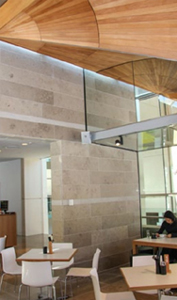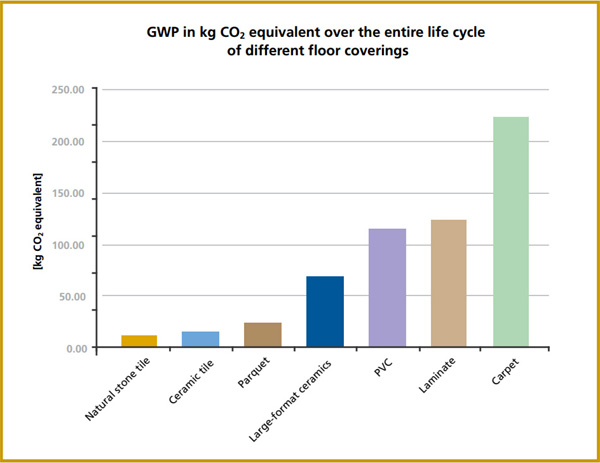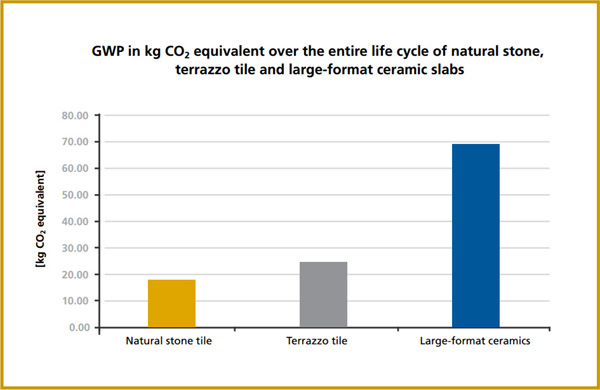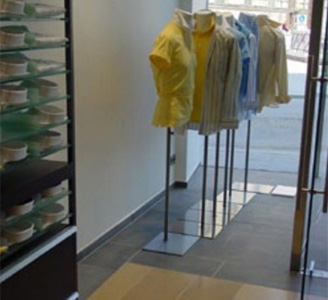
Joachim Grüter, President of the German Natural Stone Association (DNV)
Introduction
Sustainable building has gained in importance in recent years. The meaning of Sustainable building is the consideration of ecological, economic and social aspects in planning and construction processes and real estate management. Germany has been working on the fundamentals and guidelines for the Sustainable Building Round Table, established by the Federal Ministry of Building, since 2001. One of the results of this work is the Guide to Sustainable Building by the Federal Ministry for Environment, Nature, Building and Nuclear Safety, which is used as a planning guideline for public construction projects
A certification system for sustainably designed and constructed buildings has been developed, in particular thanks to the activities of the German Sustainable Building Council (Deutsche Gesellschaft für Nachhaltiges Bauen).
The German Sustainable Building seal of quality includes a catalogue of around 50 criteria which quantify numerous aspects for planners, architects, builders, etc.
Internationally, sustainable building is often equated with the term green building. A similar certification system has existed in Great Britain for many years. The BREEAM system also assesses the buildings environmental performance, including social and health aspects, but does not evaluate economic performance. In the US, the LEED system was developed by the US Green Building Council. The system is now also used outside the United States for planning energy-efficient and green buildings. To date, the LEED system does not use a total building life-cycle assessment to evaluate the ecological performance of a building, but instead bases the ecologically motivated selection of materials on the evaluation of individual properties. For example, in the LEED system, a rating is given for materials and construction products that are transported less than 800 kilometres to the construction site.
Today, the topic of reducing energy demand and CO2 emissions is becoming increasingly important. Because the construction sector makes a major contribution to global CO2 emissions and energy consumption, construction products should also have the lowest possible environmental impact in their manufacture and use, right through to disposal, taking economic aspects into account. Each year, more than 350 million square metres of new floor coverings are laid in build¬ings in Germany alone.
For these reasons, the Deutscher Naturwerkstein-Verband e.V. (DNV – German Natural Stone Association) commissioned a study by the Institute of Construction Materials at the University of Stuttgart, which compares the ecological and economic impacts of different floor coverings from the production to the use phase.
Summary
The object of this study is to determine the ecological performance of different floor coverings used in a variety of public and commercial applications.
The ecological impact of a load-bearing structure comprising concrete base, insulation layers and screed for the different floor coverings, including the necessary mortar, was also studied in a life-cycle screening procedure. The data was collected from existing environmental product declarations (EPD) issued by the various building material manufacturers. Natural stone floor coverings predictably achieve very good life-cycle assessment results, due to the low primary energy demand of the stone. According to the German Bundesverband Baustoffe – Steine und Erden (Federal Construction Materials Association – Non-metals), the costs of energy consumption for processing natural stone are a mere 3.3% of the production value.


Art Gallery, Auckland, New Zealand. Dietfurt Limestone.

Ludwig-Erhard-Haus, Berlin, Germany. Krastal Marble.
A comparison of all floor coverings showed that those produced from natural stone cause a significantly lower environmental impact in their production, installation and use than large-format ceramics, carpets, PVC, laminates and parquet.
In the especially important category of global warming potential (GWP) impact, the production and utilisation of floor coverings using natural stone tiles display significantly lower CO2 equivalents than the production and use of other covering materials. At 10.9 kilograms CO2 equivalent, the lowest emissions are attributed to the GWP of natural stone tiles, together with the associated adhesive mortar. The GWP of a carpet is with a value of approx. 223 kilograms CO2 equiv. more than 20 times higher than for a natural stone tile (See Figure 1).

When investigating coverings used for the highest performance floors, it was found that equivalence values for natural stone slabs are lower in all impact categories compared with terrazzo tiles. For example, the GWP of a natural stone slab is about 27% lower than that of an terrazzo tile and about 74% less than that of large-format ceramics.

Another important aspect of using natural stone is the influence of transportation. While only 0.16 kilograms CO2 equiv. are produced when using local natural stone (100 km lorry transport), this increases to 3.2 kilograms CO2 equiv. in the case of transport within Europe (2000 km lorry transport) and 7.9 kilograms CO2 equiv. per square metre of flooring for natural stone from China (18,600 km by ship, 150 km by lorry and 200 km rail transport).

Representative environmental product declarations were selected for all flooring products studied. They contain verified values that may be anticipated for the various environmental impacts. The EPD of a product group with available EPD was selected as being representative of the respective floor covering. Missing information or undeclared modules for individual life-cycle phases were supplemented with appropriate assumptions, employing data from comparable EPDs or available databases such as Ökobaudat (eco building database) for the analysis. An analysis of life-cycle costs, which depend significantly on the level of cleaning costs, is also included in the LCA study.

Shopping Centre, Westfield, England. Jura Limestone

Boutique, Munich, Germany. Solnhofen Flooring
Companies that have collaborated in the elaboration of the study: ZDNW – Zentralverband der deutschen Naturwerksteinwirtschaft, Sopro Bauchemie GmbH, Franken-Schotter GmbH & Co. KG, Naturstein-Verband Schweiz, AKEMI chemisch technische Spezialfabrik GmbH.
More information at www.natursteinverband.de
